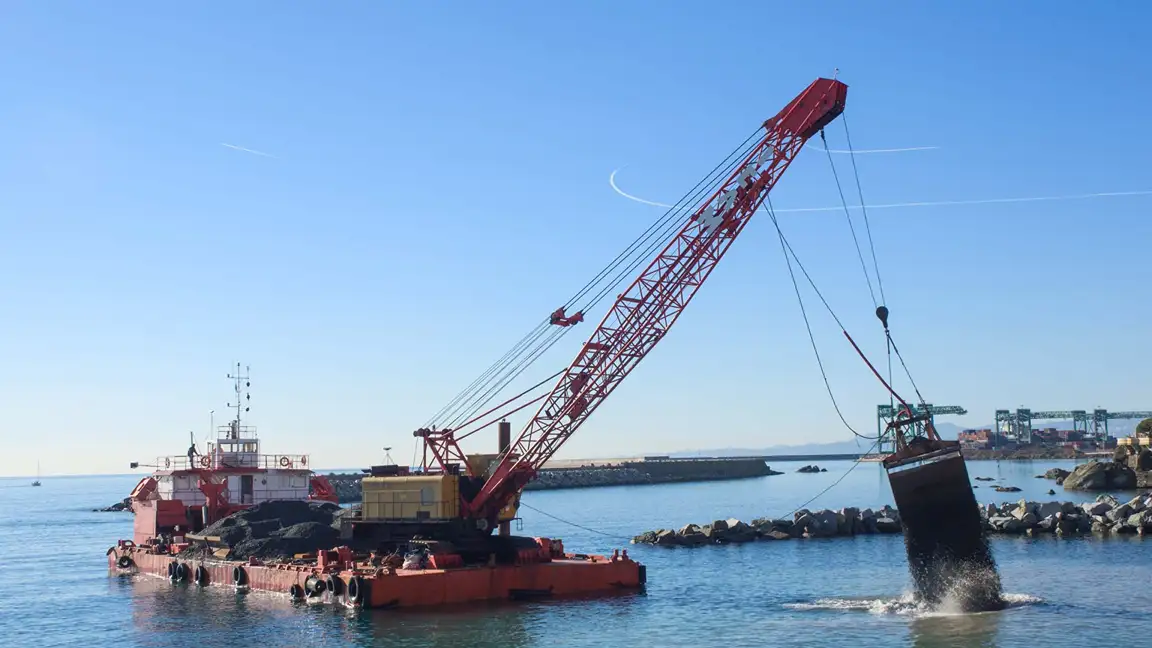Introduction
The Port of Oakland has long been a major hub for shipping and trade along the West Coast, handling everything from container cargo to bulk goods. However, as the size of ships continues to grow, there’s an increased need for deeper channels and berth areas to accommodate these massive vessels. This necessitates a process known as dredging, where sediment is removed from the seabed. But what sets the Port of Oakland apart is its commitment to sustainability, using this dredged sediment for the greater good of the San Francisco Bay ecosystem.
Sustainable Dredging at the Port of Oakland
Dredging is essential for keeping the Port operational, but it also has a substantial environmental impact. In line with regulations, the Port of Oakland ensures that a minimum of 40% of the dredged sand, silt, and mud is put to beneficial reuse, rather than being disposed of in landfills or at sea. In a major step towards sustainability, the Port is now sending more of this sediment to help restore vital wetland areas.
The Port of Oakland’s sustainable dredging initiative aims to protect the region’s environment by using the dredged sediment to aid in the restoration of natural habitats. Rather than letting the sediment go to waste, it’s redirected to sites like the Montezuma Wetlands Project, an effort that helps to restore critical ecosystems and support endangered species.
Montezuma Wetlands: A Key Restoration Site
Located in Solano County, the Montezuma Wetlands Project is a private initiative designed to restore tidal wetlands using the millions of cubic yards of dredged sediment that are removed annually from Bay Area ports, harbors, and shipping channels. The site is part of a larger effort to enhance the San Francisco Bay Estuary, which provides essential habitats for numerous species.
The dredged sediment from the Port of Oakland plays a crucial role in this restoration process. It is used to build up areas of the wetland, which are critical for the survival of various plant and animal species. This reuse of sediment through sustainable dredging not only reduces waste but also benefits the ecosystem in a meaningful way by providing a valuable resource for wetland restoration.
Environmental and Ecological Impact
Wetlands serve a critical function in the San Francisco Bay ecosystem. They provide habitat for numerous species, improve water quality, and protect against flooding. The restoration of tidal wetlands is essential for maintaining the health of the Bay Area’s ecosystem, which has seen significant degradation over the years.
One of the primary benefits of restoring the Montezuma Wetlands is the support it provides to endangered species. These wetlands are home to several special-status species, including the salt marsh harvest mouse, California least terns, Delta smelt, longfin smelt, and various species of salmonids.
Scientists have described the restoration of Montezuma Wetlands as crucial for meeting regional recovery goals for these species. Many of them are on the brink of extinction, and without continued restoration efforts, their populations may continue to decline. By contributing dredged sediment to the restoration project through sustainable dredging, the Port of Oakland is helping to preserve these species and their habitats.
Funding and Support
In 2025, the San Francisco Bay Restoration Authority awarded a $2.1 million grant to the Montezuma Wetlands Project. This grant will help offset the costs associated with transporting and using the dredged sediment for wetland restoration, making it more cost-effective for the Port to increase its contribution to the project.
This funding, combined with the Port’s commitment to sustainable dredging practices, ensures that more sediment can be redirected to the wetlands, ultimately benefiting both the environment and local communities.
Long-Term Benefits of Sustainable Dredging
The long-term environmental benefits of sustainable dredging are far-reaching. By reusing dredged sediment, the Port of Oakland is contributing to habitat restoration, improving water quality, and supporting biodiversity in the Bay Area. These efforts help to enhance the overall health of the ecosystem and create a more resilient environment.
The restoration of wetlands also provides important ecosystem services, such as flood control, carbon sequestration, and water filtration. Additionally, these areas serve as crucial stopover points for migratory birds and provide opportunities for recreation and education for local communities.
Conclusion
The Port of Oakland’s sustainable dredging initiative is a powerful example of how infrastructure projects can be aligned with environmental goals. By sending more dredged sediment to the Montezuma Wetlands, the Port is not only maintaining the navigability of its shipping channels but also contributing to the health and restoration of the San Francisco Bay ecosystem. This collaboration between the Port, Montezuma Wetlands, and local conservation organizations highlights the importance of sustainability in addressing both economic and environmental challenges.
As we move forward, it is essential that such initiatives continue to thrive, demonstrating that responsible dredging can go hand in hand with habitat restoration. The Port of Oakland’s commitment to these efforts signals a promising future for both the Bay Area’s economy and its ecosystems.
